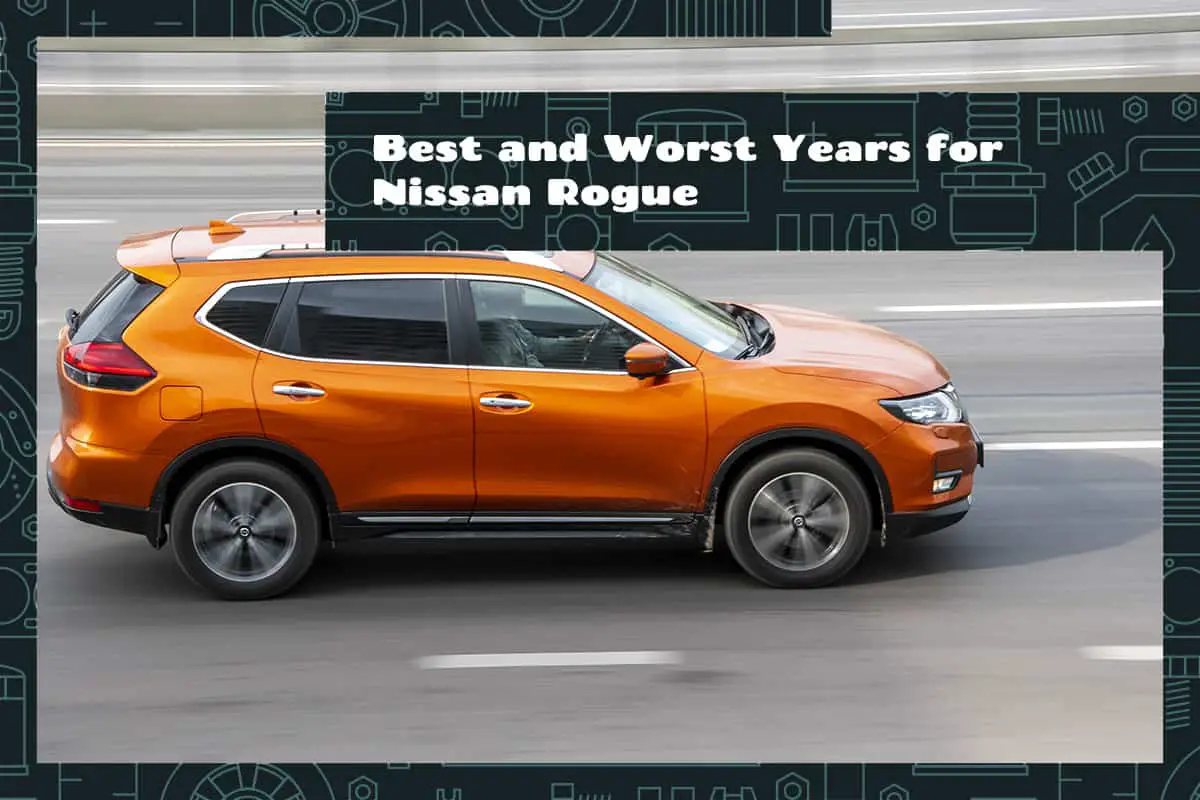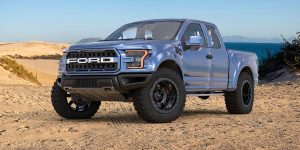The Nissan Rogue, since its inception in 2007, has evolved to become a significant player in the compact SUV market. This versatile vehicle offers a blend of comfort, efficiency, and innovative features. However, like any other model, the Rogue’s journey has witnessed its fair share of highs and lows, with certain production years standing out—for better or worse.
The best and worst years for the Nissan Rogue throughout history are:
- Best Years: 2015, 2017, 2020
- Worst Years: 2008, 2012, 2014
This comprehensive guide dives into the detailed analysis of these specific years, providing insights into their unique strengths and weaknesses.
History of Nissan Rogue
Nissan Rogue, a popular compact crossover SUV, was introduced by the Japanese automaker Nissan in 2007. The model was Nissan’s entry into the rapidly growing compact SUV market, aiming to provide a car-like driving experience combined with the utility of an SUV.
Birth and Early Years (2007-2010)
The Nissan Rogue was first unveiled at the North American International Auto Show in January 2007. This compact SUV was based on Nissan’s C platform, borrowing design elements from Nissan’s X-Trail and Qashqai.
Launched for the 2008 model year, the Rogue quickly gained popularity for its sleek design, comfortable interior, and fuel efficiency. It was equipped with a 2.5-liter four-cylinder engine that produced 170 horsepower and came with a continuously variable transmission (CVT), providing a smooth ride for drivers and passengers alike.
Evolution through the Decade (2011-2020)
The Rogue saw significant evolution in its design and features throughout the next decade. In 2011, Nissan introduced an upgraded model with enhanced styling, better fuel efficiency, and added tech features like the navigation system and rearview camera, elevating the overall user experience.
The 2014 model year marked the start of the second generation of the Nissan Rogue, featuring a revamped design and increased passenger capacity. Although this new generation was initially received with much enthusiasm, it soon faced criticism for its reliability issues.
The success continued into 2017, with the Rogue becoming the bestselling model for Nissan, thanks to its fuel-efficient engine, spacious interiors, advanced safety features, and reliable performance.
In 2020, Nissan introduced the third generation of the Rogue. Boasting a comprehensive redesign, the model offered a more powerful engine, enhanced fuel economy, and an array of high-tech features, including a digital dashboard and advanced driver-assistance systems.
The story of the Nissan Rogue isn’t just about the rise and fall of a vehicle model—it’s a narrative of continual innovation and learning from past mistakes. Each year, Nissan took the feedback from the previous models, refined the design and technology, and consistently worked towards offering a better driving experience. This commitment to improvement is what has kept the Rogue a competitive option in the compact SUV market throughout the years.
In-depth Analysis of the Best Years for Nissan Rogue
Nissan Rogue has had some exceptional years in its production history, proving to be a valuable choice for consumers. This section explores the best years for the Nissan Rogue—2015, 2017, and 2020, evaluating their standout features and accolades.
Nissan Rogue 2015
The 2015 Nissan Rogue truly changed the game for the automaker. This model stood out for its superior comfort, affordable price, and high safety ratings. It showcased significant enhancements over previous years, especially in terms of its interior quality.
The model featured a 2.5-liter four-cylinder engine that delivered 170 horsepower and was paired with a CVT. With its impressive fuel economy—up to 25 MPG in the city and 31 MPG on the highway—the 2015 Rogue was an economical choice for many drivers.
The Nissan Rogue 2015 also introduced advanced safety features like Forward Collision Warning, Blind Spot Warning, and Lane Departure Warning, contributing to its high safety scores from the Insurance Institute for Highway Safety (IIHS).
Nissan Rogue 2017
The 2017 model brought the Nissan Rogue to the pinnacle of its success. It became the best-selling model for Nissan this year, thanks to its fuel-efficient engine, spacious interior, advanced safety features, and reliable performance.
One of the highlights of the 2017 Rogue was its roomy cabin that comfortably accommodated up to seven passengers, thanks to the optional third-row seating—a rare feature in the compact SUV segment. Furthermore, the interior featured quality materials, lending an upscale feel to the car.
The 2017 Rogue was also equipped with a 2.5-liter four-cylinder engine delivering 170 horsepower, maintaining the solid performance of its predecessor. Additionally, its fuel efficiency, with up to 25 MPG city and 32 MPG highway, made it an excellent choice for drivers looking to save at the pump.
On the safety front, the 2017 model continued with the robust safety features introduced in 2015 and added some new ones like the Intelligent Cruise Control and Forward Emergency Braking with Pedestrian Detection.
Nissan Rogue 2020
Entering its third generation in 2020, the Nissan Rogue introduced an array of high-tech features, making it a tech marvel in the compact SUV market.
The model featured a newly designed 2.5-liter four-cylinder engine that produced 170 horsepower, providing a more dynamic and responsive driving experience than in previous years. The Rogue 2020 also maintained its commendable fuel efficiency with an estimated 26 mpg city and 33 MPG highway.
A highlight of the 2020 model was its state-of-the-art technology. The car featured a digital dashboard and a head-up display—uncommon in the compact SUV class. Nissan’s ProPilot Assist, a driver-assistance technology, was also standard, offering features like adaptive cruise control and lane-keeping assist.
Moreover, the 2020 Rogue ensured top-notch safety with the Nissan Safety Shield 360 package as standard, offering a suite of safety features like automatic emergency braking with pedestrian detection, rear automatic braking, and blind-spot warning.
Critical Review of the Worst Years for Nissan Rogue
While the Nissan Rogue has enjoyed several standout years, it has also encountered years that were less favorable. The years 2008, 2012, and 2014 were marked by various issues that affected Rogue’s performance and reliability.
Nissan Rogue 2008
Being the debut year for the Nissan Rogue, 2008 was not without its struggles. The primary issue that plagued this model was related to the CVT. Many owners reported problems such as transmission failure, loss of acceleration, and overheating of the transmission, often leading to expensive repairs.
Additionally, some owners reported issues with the fuel system, including poor fuel efficiency and difficulties with the fuel gauge sensor. These technical problems significantly affected the reliability of this model, making it one of the less successful years for the Nissan Rogue.
Nissan Rogue 2012
Despite improvements made in the intervening years, the 2012 Nissan Rogue was another challenging year for the model. The main issue resurfaced with the CVT. Owners reported similar problems as in 2008—loss of acceleration, transmission failure, and in some cases, complete transmission replacement.
The Rogue 2012 also had problems with the heating system, with owners reporting a faulty heater or the heater not working effectively during cold weather. As a result, the 2012 model, despite having some upgrades in design and features, fell short in terms of reliability and performance.
Nissan Rogue 2014
Entering its second generation, the 2014 Nissan Rogue arrived with high expectations. However, it faced criticism due to reliability concerns. The CVT issues, unfortunately, didn’t completely subside. Transmission failure and loss of acceleration were still present in some models, tarnishing the launch of this new generation.
Furthermore, the 2014 model was plagued by several additional problems, including air conditioning/heating issues and problems with the electrical system. These ranged from faulty sensors to malfunctioning power liftgates.
The 2014 Rogue also faced recalls for defects like a faulty fuel pump that could cause the engine to stall, posing a safety risk. In total, these problems made the 2014 Nissan Rogue one of the least reliable years.
FAQs
1. Is Nissan Rogue a reliable vehicle?
Yes, the Nissan Rogue is generally considered a reliable vehicle. Over the years, the model has continually improved in terms of performance, safety, and reliability. However, it’s crucial to note that some years had reliability issues—specifically 2008, 2012, and 2014, where problems with the CVT were common.
However, Nissan addressed these issues in subsequent models, resulting in improved reliability ratings. Models like the 2015, 2017, and 2020 Rogue have been particularly praised for their performance, safety features, and dependability.
2. What are the common problems with Nissan Rogue?
The Nissan Rogue, especially in its earlier years, faced common problems related to the CVT Issues, including transmission failure, loss of acceleration, and transmission overheating. Some models also encountered problems with the fuel system, heating system, and electrical system, including malfunctioning sensors and power liftgates.
3. How does Nissan Rogue compare to other SUVs in its class?
The Nissan Rogue stacks up well against other SUVs in its class. It offers a blend of comfort, efficiency, and advanced safety features typically found in compact SUVs. The Rogue boasts spacious interiors with ample cargo space, a user-friendly infotainment system, and high safety scores, making it a strong contender in the compact SUV market.
In terms of fuel efficiency, the Rogue often outperforms its competitors, providing excellent mileage for both city and highway driving. The introduction of advanced technology features, particularly in the 2020 model, further sets the Rogue apart in its class.






